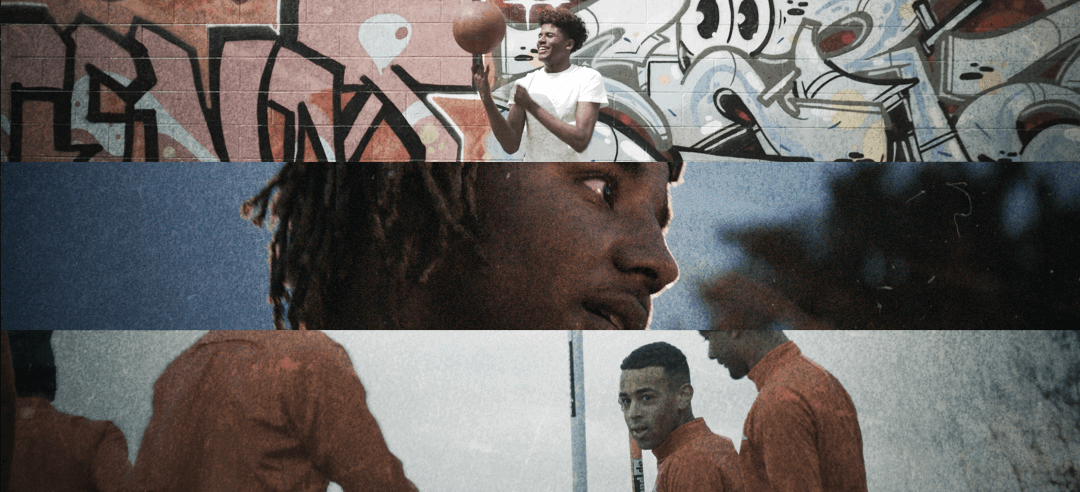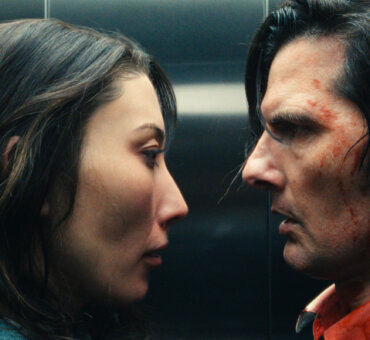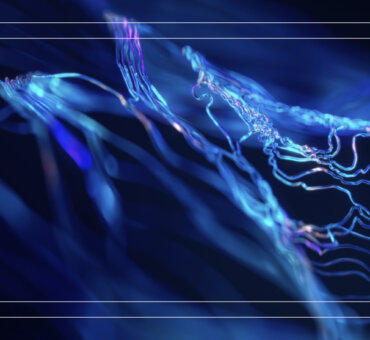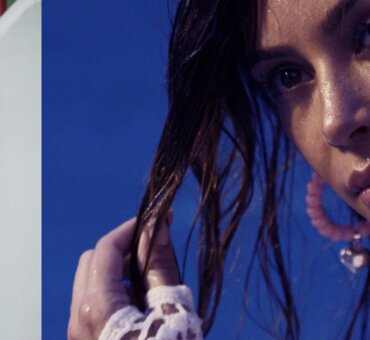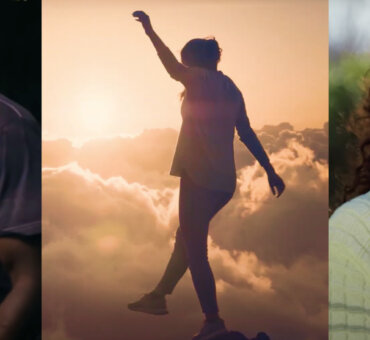An editor’s perspective is key to the success of a film. Their mindset affects every aspect of the cut, the way the story takes shape, and even how the audience will perceive a character’s journey.
For Prodigy, an 8 episode docu-series on the brand-new streaming platform Quibi series produced by Park Stories, editor Lucas Harger had to continually re-frame his perspective. Why? Because he had 165 hours of footage that needed to be cut into eight 10-minute episodes. You can’t limp your way through that process, but you can adapt how you tell the stories:
“You can’t encapsulate someone’s life story in 10 minutes. It’s impossible,” Lucas told us. “But, what you can do is hone in on the elements that make them who they are at this moment in time.”
Lucas, along with Producers Rand Getlin and Janina Getlin, have accomplished a major feat with Prodigy. As part of the initial release with the new streaming platform, it’s an exciting glimpse into what documentaries can look like in a new format.
Filmsupply: Did the 10-minute Quibi format present some editing challenges?
Lucas Harger: The 10-minute aspect was a little bit concerning at the forefront because we had done short-form content, but with those we didn’t necessarily have a target length other than “short”. Editorially, I didn’t have the normal time to transition between thoughts, moments, emotions, and moods. You had to exercise a pretty extreme economy of time, to get between these moments as quickly as you can while also bringing along the audience. But, once we started to put these stories together in post, it really became clear just how new of a sandbox Quibi was for storytelling.
You can’t encapsulate someone’s life story in 10 minutes. It’s impossible. But, what you can do is hone in on the elements that make them who they are at this moment in time. You’re getting to experience these things, while also leaving breadcrumb trails to show that there’s so much more here that we don’t have time to explain to you. You finish these pieces feeling the complexity of them as individuals, and it’s not reductive or diminishing or saying, “We told you their whole life in 10 minutes.”
Do you intentionally hint at larger ideas without exploring them?
Lucas: It’s about leaving some stones unturned, but leaving the audience wanting more. The majority of sports documentaries are retrospective. You’re looking back at Michael Jordan’s life. You’re looking back at these big games, these big moments. This is different because it provides a glimpse into these athletes now as they’re rising. Then, if you want more, you can get more. They’re on social media. They’re tweeting their story. There are all of these ways you can engage with them.
At the end of each piece, if somebody said, “I want more,” that’s a win. Once we got into the 10-minute limit, it became a really fun playground to actually break the rules of storytelling. There’s something that happens, or you see something that happens, but we don’t get into it, just hint at it.
It sounds like you have to be pretty ruthless in the edit.
Rand Getlin: That’s what’s really interesting. We over-capture like crazy. Lucas, how much footage did we capture?
Lucas: It ended up being around 68 terabytes; I think it was around 165 hours of footage.
Rand: And that’s for probably around 70 minutes of total run time or even less. Some of our interviews ran three hours. None of our interviews ran less than an hour. In some episodes, we were interviewing seven people and walking away with 10 hours of interviews.
Rand: We went to the deepest depths of the ocean. When Lucas says, “We can’t tell your life story in 10 minutes,” that’s accurate. From an editorial standpoint, it’s just impossible. That doesn’t mean we didn’t have the footage to do so.
Lucas: Absolutely. I could cut hour-long versions of every single one of these episodes.
Rand: The footage hit Lucas’ desk and his team’s desk, and I’m sure they’re just like, “Oh my God. What am I going to do with this?”
It’s impossible to overstate the importance of his role. He’s essentially a post supervisor in many ways. He’s managing three additional editors underneath him on this project, four in total, I think, a world-class colorist, a world-class sound designer, and everyone is working in tandem to hit the same ridiculously condensed timeframes that we are on.
He has a ‘written-by’ credit on this series because of our process. Once it gets to him, he is in charge of digging through all of that media and saying, “This is the story.”
So, how do you begin to break down 165 hours of footage?
Lucas: I start by crying. No, just kidding. We don’t really have assistant editors at our post house. Everybody can jump in and take those assistant editing roles as needed, organizing whatever we have. But I prefer the editor to be the one in charge of the process from ingest to export, because you just learn so much from the footage.
For me, the organization process is where I start to break down the narrative, understanding all of the different textures that I have to work with. I’ll go through all of that verité, B-roll, and start logging it in my brain, trying to look at what is literally happening but also the emotional undertones.
Then I’ll go through and start listening to the interviews. That’s where, if I’ve seen all of the B-roll and all the verité, I can listen to the interview and start to put it together in my brain. If you start with the interviews first, then you don’t know what you have. Once you start to have an emotional reaction, watching just raw interviews, raw footage, raw moments, I take note of that.
Do you have a tangible example of one of those moments that stood out to you?
Lucas: I think one of the obvious ones to a viewer would be Sha’Carri’s story. Maybe I’ll cut a reel of all of the times she said, “I’ve never really told anybody this, but…” It’s crazy. Going through all of the B-roll footage, I started seeing all of these shots where she is very introspective. For what? I didn’t know. And, in these interviews with her family, you start uncovering these fossils in their past. Her aunt starts talking about something that happened in Sha’Carri’s life. She says something like, “Running was her coping mechanism.” It brings up questions in your mind.
Finally, I always save the athlete interview for last, there’s the experience of watching that interview and learning firsthand what’s shaped her—in this case, her mother abandoning her. It’s powerful because it had been building to that moment. It was the experience of watching the raw footage that informed the edit of the episode. Hopefully, the audience can have that same experience.
Rand: What he’s explaining to you is the distillation of all of this stuff that we’ve planned for, but when it hits the edit, all bets are off. Now it’s time to find what really exists. We know what we think exists. Now let’s find what really exists.
How do you keep a solid perspective over the course of eight episodes, and 165 hours of footage to work through?
Lucas: For me, it’s about understanding what the athlete has shared with us and feeling the weight of their stories. They’re giving us all of this access and this intimacy. It really comes down to a respect of the subject and a desire to rise to the occasion. That’s the DNA of this series; these prodigies who are performing at the highest absolute level. You can’t help but be inspired by that.
It pushes you to respect and give everything you have to the story. You’re watching these people do insane things and work their asses off, which also then pushes me. It’s really a conversation between me and the subject, and the subject is speaking through what’s been captured.
I keep at the forefront of my mind what an incredible opportunity and honor it is to have all of this footage and be in the seat I’m in. As the editor, I’m the first audience. What can I do to package up this story as powerfully as possible for the second audience? It’s really an honor to be the first audience for these stories.
